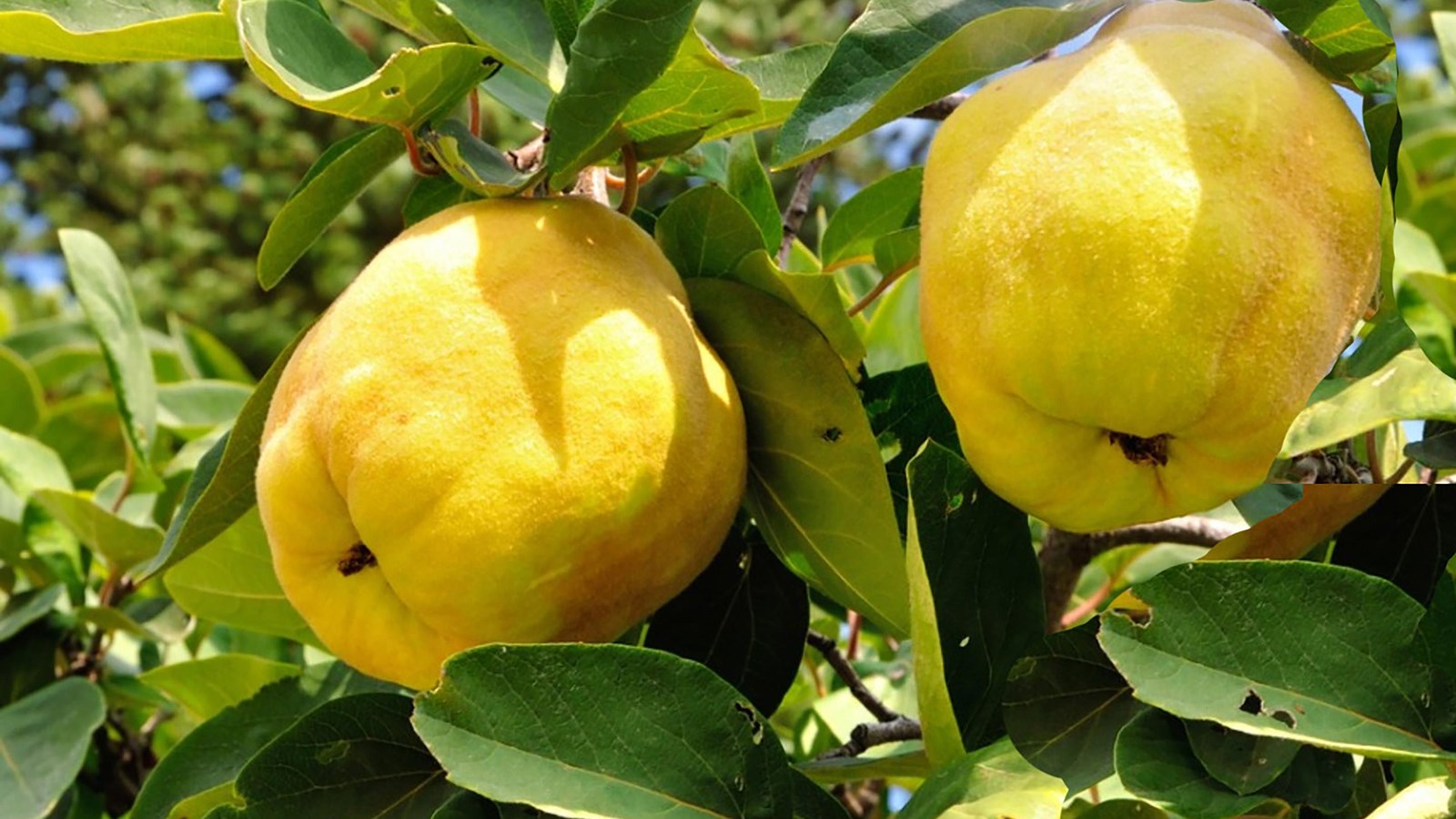Last updated: December 12, 2024
Place
Stop 9: Quince Bush, what is it?

NPS photo/Luther Bailey
Transcript for John Muir NHS Cell Phone Tour
Stop Number 9
These large bush-like relatives of the apple and the pear are called quinces. This old-fashioned fruit is rarely seen in stores today. Quinces are not ripe until November and are usually cooked before eaten. They are often used in making jams and jellies because of a high pectin content which serves as a gelling agent.
The reason for quince use here in the Alhambra Valley has nothing to do with their taste. In Muir’s day pears were sickened by a fungus that attacked their roots. The quinces, however, were not affected. So fruit ranchers of the time grafted pear trees to quince rootstocks to help increase disease resistance.
Grafting is a common process in horticulture. A sample is taken from a species or variety you want to grow and attached to the rootstock of a related variety. For example, horticulturalists graft English walnuts, the favored variety of walnuts, onto native Black walnut root stock. This ensures healthy growth and production of the exotic variety in an area where it would normally fail.
hough Muir preferred the “wild” apples and fruits of the woods to the grafted and “tamed” ones, he realized that grafting was a crucial part of a successful agricultural business.
